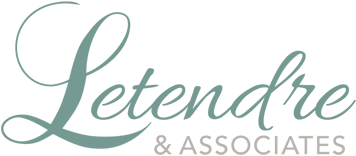How Do They Contribute?
For many organizations in pursuit of organizational excellence, or simply continual improvement, the role of the Board is often overlooked in this.
How does your Board of Directors and your governance approaches contribute to the organization’s high performance or dysfunction? How does their functioning as a group impact the organizational climate?
These are questions that I have been exploring as of late with a number of chief executives and their Boards.
My colleague, Christian Milaster often reminds our clients that “every system is perfectly designed to get the results it gets” (quoting Paul Batalden), so … ”if you want a different result, you have to change the system.” This premise is relevant to the multitude of systems and processes in an organization, including the governance processes.
I’ll share a case study example to illustrate:
This Board was struggling with the dynamics between the Board and the chief executive. Board meetings were tense, sometimes disrespectful, and often dominated by strong personalities. Numerous Board members were silent bystanders as these dynamics played out in meetings.
The CEO was often directed, in very precise terms, how to carry out his job. And on top of that they used an opinion-based CEO evaluation process that invited opinions from each and every member of the staff — creating direct lines of communication between disgruntled staff members and the Board of Directors.
Things had escalated to a point of intensity and dysfunction.
The Board sought our guidance to move to a better place. They knew they wanted change, but didn’t know what or how. We framed our work with them in a pivotal way: improving organizational performance through governance effectiveness.
What we uncovered was that their existing governance processes and relationship building approaches were not effective. I would categorize that the dysfunction of the Board, particularly the lack of mutual trust between Board and CEO, was having a ripple effect within the organization. Mistrust permeated layers into the organization.

Through the retooling of numerous governance processes, among them the routine and structured reporting of performance and strategic progress, the complete redesign of the CEO evaluation process focused on organizational performance, and the thoughtful rebuilding of relationship approaches between and among key members of the Board and leadership, this organization has turned a major corner.
Some notable accomplishments:
- The governance process now supports, rather than hinders, a climate of high performance.
- The Board remains focused on governance not management topics, and has mechanisms in place to pull themselves back when they occasionally veer into management-level topics.
- The Board has defined an appropriate level of involvement in the strategic process vis-à-vis the professionals running the organization.
- The CEO and Board have defined the organizational performance parameters that are most vital for the organization’s success.
- The CEO has been given the reins to lead and deliver, guided by clarity around acceptable (subpar and exceptional) levels of organizational performance.
- Board meetings are highly productive, strategic, and effective.
- There are no longer bystanders. All Board members are now active participants in Board meetings and on Board Committees.
- Board members are now even beginning to recruit new members to this now healthier Board environment!!
This didn’t happen overnight. In fact, it took about a year to create this magnitude of change and improvement, and time to ensure the process changes were well-anchored. The Board and CEO now feel much better positioned for high performance and success. The systematic processes are in place for the long-haul, not simply resting on temporary person-based fixes.
So often we as leaders recognize that we need high-performing teams to grow, improve, and innovate. Yet, we often overlook the governance team in that equation. Their effectiveness and the “maturity” of the governance system can be a contributor to improving organizational performance, a major detractor, or neutral.
If you’d like to receive these Inspirations in your inbox every other week, you can subscribe to Kathy’s Excellence Advantage Inspirations Newsletter.
Kathy Letendre, President and Founder of Letendre & Associates, advises organizations and leaders to create their excellence advantage.
Contact Kathy by phone or text at 802-779-4315 or via email.


